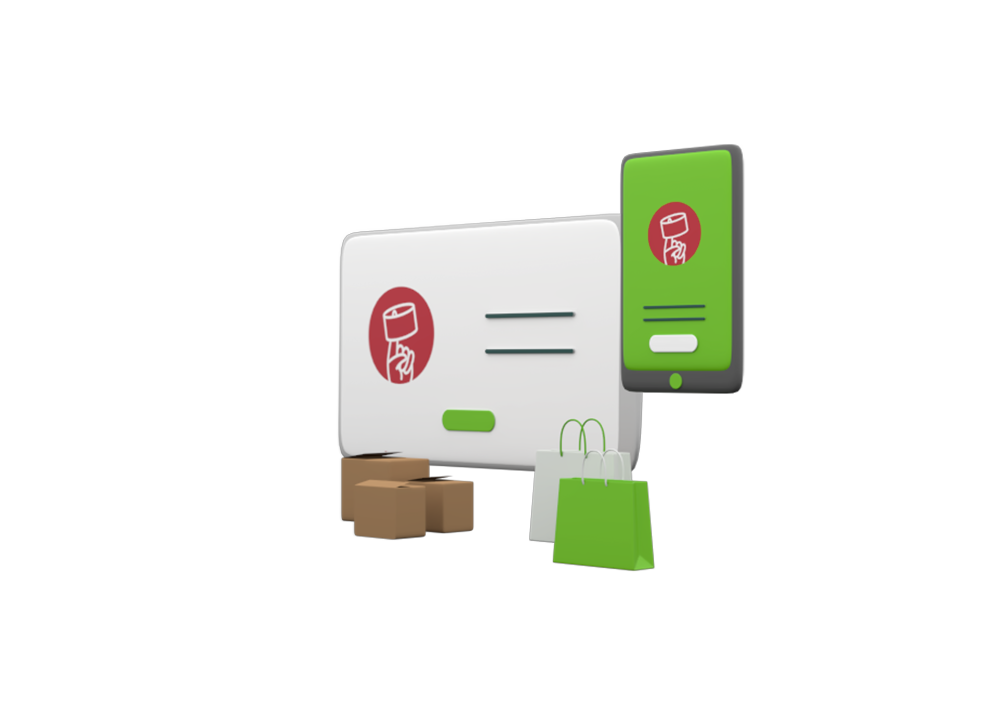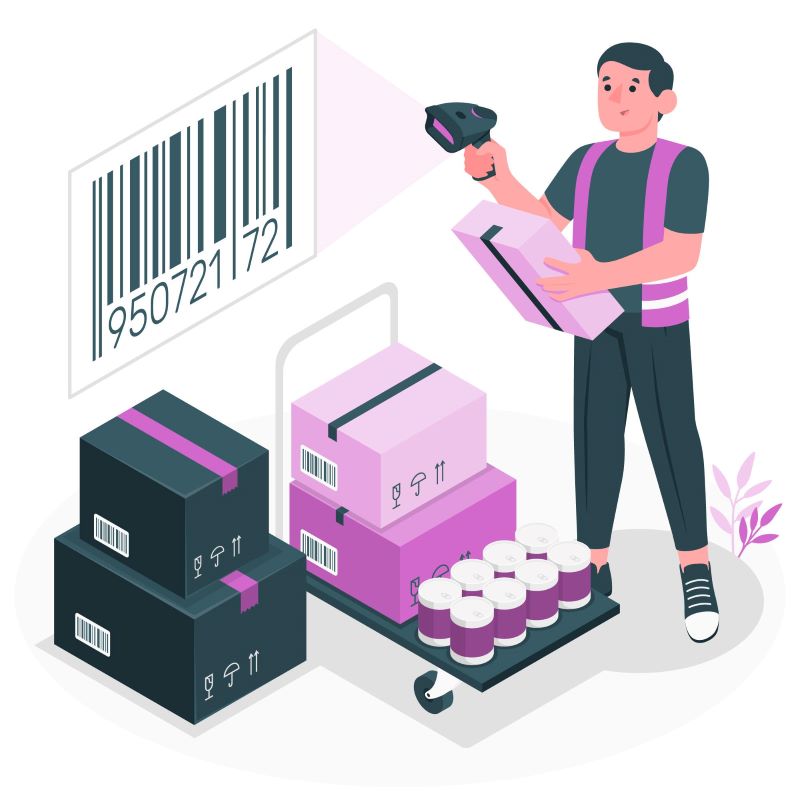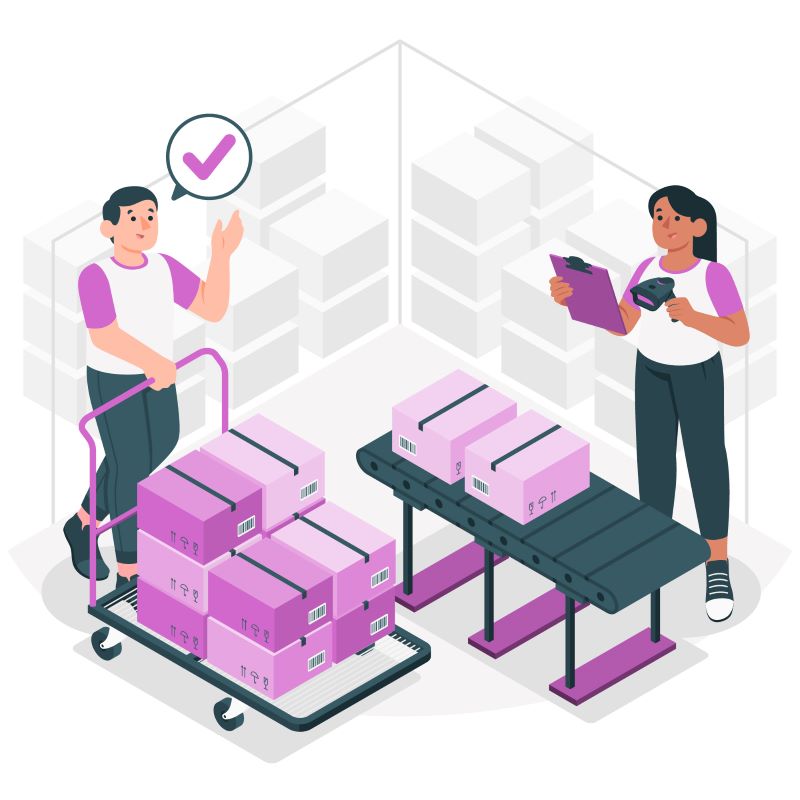Best practices for Ecommerce Inventory Management with Ginesys One

Inventory management in ecommerce has the potential to make or break ecommerce operations. According to Data Bridge Market Research, the global inventory management software market, valued at US $1.53 billion in 2021 will rise at a CAGR of 6.62% to reach US $2.56 billion by 2029.
The significance of streamlining your inventory management for ecommerce in ensuring the success of your ecommerce business is huge. Streamlining your ecommerce inventory software will ensure that your products are available as and when your customers place orders. This will help prevent stockouts that could potentially result in lost sales and dissatisfied customers.
Effective ecommerce inventory management also helps ensure order fulfillment, optimizes your cash flow, enhances demand forecasting and helps avoid any kind of overstocking or obsolescence.

Streamline your ecommerce inventory management with India’s best Omnichannel and Inventory Management Software.
Key Benefits of ECommerce Inventory Management
Greater Accuracy of Inventory Tracking
Inventory management software for ecommerce makes it easy for retailers to maintain accurate, real-time visibility of their inventory spread across multiple sales channels. This ensures that they have up-to-date information on stock availability. This will also eliminate the risks associated with overselling or underselling products, enhancing customer satisfaction and reducing the cancellation of orders.
When retailers have comprehensive inventory data at their fingertips, they can optimize their stock levels, anticipate demand patterns over a certain time period, and make more informed purchasing decisions. This leads to an improvement in inventory turnover, minimizes carrying costs and reduces instances of stockouts, increasing profitability and operational efficiency.
Near Real-Time Inventory Sync with your online sales channel for Higher Sales

Ecommerce inventory management software streamlines the order fulfillment process by automating' inventory updates to your Ecommerce sales channels, be it Shopify, Magento, Woocommerce or marketplaces like Myntra, Tata Cliq or Amazon.
This sync takes place in near real-time (in some of the better ones like Ginesys One's Browntape OMS in a few seconds. This is essential if you want to serve multiple channels from a single inventory pool to reduce your inventory holding cost. The sync happens via APIs and is fully automated. Usually most of the popular platforms are pre-integrated with the inventory and order management software. E.g. Browntape is integrated with 30+ marketplaces and ecommerce platforms.
Driving Efficiency in Your Ecommerce or Multichannel Warehouse
This kind of' order and inventory management software also helps with improving efficiency and accuracy of routine tasks including order processing. picking, and packing. You can organize your inventory in bins, racks and other holding bins. You can also define holding and return bins. The warehouse system automatically creates picking batches, assigns pickers who are idle and assigns pickers to the right bin for their orders in an efficient sequence.
Improved Forecasting and Demand Planning
An inventory management system will help provide greater insights into sales patterns, the latest sales trends and customer behavior. This data can be used to improve the accuracy of demand forecasting and planning, allowing retailers to optimize their inventory levels, reduce excess stock, and anticipate customer demands.
How Ginesys OMS has been at the Forefront of this Evolution
Ecommerce operations have come a long way over the last couple of decades. Ginesys' Order management systems (OMS) have been at the forefront of this evolution, helping leading retail brands successfully streamline their ecommerce inventory management software. Ginesys One's Browntape OMS has helped several brands update their online channels using SKU information, providing updated inventory and pricing information, running discounts and fulfilling orders through shipping, ERP and accounting integrations.
There are certain best practices you need to follow to ensure that your inventory management software for ecommerce is streamlined and functions effectively. This blog lists out these best practices in greater detail.
Best Practices for eCommerce Inventory Management
Ensure Unique Identification of Products through SKU Codes

Stockkeeping Unit (SKU) codes play a crucial role in ecommerce inventory management, since they function as unique identifiers for individual products within the company's inventory system. Each product is clearly distinguished from the other using these SKU codes. In other words, SKU codes enable the accurate tracking and management of each product within the inventory.
SKU codes also act as a link between the product listing on various online marketplaces (MPs) and your company's OMS. Through consistent SKU codes across different platforms, products listed on your MPs get automatically mapped to their corresponding products in the OMS. SKU codes are also often linked to Enterprise Resource Planning (ERP) codes, which are used for inventory management and tracking in your backend systems.

Keep your Ecommerce Channels, ERP and Stores in Sync.
Use SKU Aliases as an Alternative
When you are selling on multiple platforms, it is not always possible for all your products to have unique SKUs or codes on all sites. Your ecommerce inventory management software should have the ability to map multiple alias SKUs to a single product ID to save on time and costs. The ability to map multiple SKUs will allow store owners to have better visibility of their inventory stock levels.
Ginesys One's Browntape OMS makes it easy for you to associate multiple alias SKUs to a single master product ID to manage your inventory more easily.
Explore Ginesys WMS for Effective Warehouse Management
Ginesys WMS enables businesses to manage their ecommerce inventory across multiple warehouses and locations. It provides real-time visibility into stock levels, enabling businesses to optimize their inventory levels and prevent stockouts. The Ginesys retail ERP allows you to create items, purchase orders, wholesale (B2B) orders, store transfers and several other transactions that flow through the warehouse. These are integrated with Ginesys WMS, which also gives you the option to create racks or bins and put away dead stock.
Update your Fields for Easy Availability in the Item Master
When you have well-maintained item master data, your business will stay on top of inventory management. Updating the item fields so they are readily available in the item master will help you easily avoid overstocking or shortage of items and enable high-level decisions about product lines. Having updated master data is crucial for more effective decision making and processes, especially when it comes to inventory management for ecommerce.
When you have good master item data, in addition to accurate sales data and forecasts, it becomes far easier to ensure higher accuracy and make timely decisions about when and how much to order from suppliers.
Generate Barcodes for every Warehouse Item
When you implement the wireless barcode scanning feature for every item in your warehouse, your warehouse activities become more streamlined and accurate. Using barcodes with a centralized Warehouse Management System (WMS) allows employees and your management to view real-time data from anywhere in the facility. This makes it far easier to track your key performance indicators (KPIs) and other important activities such as monitoring safety stock levels and inventory turnover.
Automate Inventory Updates

Automating inventory updates becomes critical for business success with the marketplace growing rapidly, and retailers launching product lines regularly. Automating your inventory management system for ecommerce can ensure that you eliminate human errors, save time, money and effort spent on manual updates. Live inventory updates will also ensure that retailers get the latest information about the inventory and can plan in advance on when to bring in new goods.
This will ensure that sellers don't keep logging into different systems several times a day to check for stock readiness. Ginesys One's Browntape OMS offers you the additional benefit of automatically updating the inventory to over 30 marketplaces and most of the popular ecommerce shopping carts.
Ensure the Right Safety Stock Levels
Setting a minimum viable stock level helps businesses maintain optimal inventory levels and avoid overstocking or understocking. It also helps ensure that customer needs are met on time. Setting a minimum stock level will also reduce wastage, as the inventory is constantly monitored to ensure that the stock doesn't go obsolete.
Ginesys' Browntape OMS comes equipped with a handy safety stock feature, which lets you block more sales from certain channels after your inventory reaches a minimum level.

Integrate your retail operations with India's leading ecommerce Order Management System.
Reserve your Inventory Automatically in your Warehouse
As a business owner, you would like to look at your inventory in just a glance. This can only be achieved by using automated inventory systems for your warehouse. An automated inventory system can help you save up to 95% of your time spent on manual data entry, allowing your data to be digitized through a simple scan on your phone. You will also be able to spot problems instantly through an automated inventory tracking system, instead of checking for it months later during the annual cycle counts.
Split Order by Warehouse or Stores for Higher Fill Rates
Splitting orders by warehouse or retail stores can help in case the entire order cannot be fulfilled from a single warehouse or store. This is again an advanced feature of some of the ecommerce order and inventory systems and provides your brand with the ability to deal with fragmented orders to ensure higher order fill rates.
Ensure POS Systems are Online to Receive Orders

Strengthen the efficiency of your warehouse and ecommerce inventory management system through POS systems. Using the right POS system for managing ecommerce inventory is one of the best decisions you can make. Small and large businesses can benefit from the costs associated with carrying too little or too much inventory. When your business is spread across more than one location, you will not need to worry about theft of inventory since your POS system will keep track of it.
Segregate Returned Items into Good and Bad Inventory
Categorizing the returned items into good and bad inventory will allow retailers to gain greater control over their stock. This makes it easier for them to track and manage their merchandise more effectively, ensuring that the good inventory is readily available for sale while addressing issues with the bad inventory immediately.
Segregating the bad inventory will help you prevent the sale of defective items to customers. By reducing the likelihood of customers purchasing faulty products and constantly supplying them with high-quality goods, retailers can enhance trust and build customer satisfaction.
Perform Regular Stock Audits at Warehouses and Store

Performing regular stock audits at your store will help identify several operational inefficiencies, including poor ecommerce inventory management, misplaced items, and other such bottlenecks. By addressing these issues, you can improve productivity, reduce wasted stock and enhance inventory management. Performing store audits is also an effective way to detect and prevent theft, fraud, and other possible forms of loss of stock. Store audits also provide greater insights into product availability, pricing accuracy, and the effectiveness of merchandising. By making sure that your shelves are adequately stocked, prices correctly displayed, and promotional materials correctly placed, it becomes easier to enhance your sales performance and capitalize on upselling and cross-selling opportunities.
Identify slow moving stock channel-wise and reallocate it to the right channel
As a retailer, it is crucial to identify your slow-moving products. Identifying slow-moving retail stock channel-wise and reallocating it to the right channel requires adopting a strategic approach. You need to start by reviewing the sales data of each retail stock across various channels. Look for patterns and identify stocks that consistently underperform in specific channels. Evaluate the performance of each retail channel individually by looking at important metrics including footfall, conversion rates, average transaction value and customer feedback to determine the effectiveness of each channel.
Look for potential channels where your slow-moving stock may have a better fit. Identify important factors such as target demographics, product characteristics, and the current market trends. Identify channels that have shown growth or have a higher potential for success and transferring your slow-moving stock to those channels. Update inventory records and systems to reflect the changes. Keep monitoring the performance of the reallocated stock in its new channel.
Perform a Detailed Quality Check of Bad Inventory
Conducting regular quality checks on bad or faulty inventory is vital not only to improve your ecommerce inventory process, but also to enhance customer satisfaction. When you remove faulty products from circulation, you reduce the risks of your customers receiving defective items. Identifying bad inventory also helps in preventing potentially costly issues such as product recalls, returns and customer complaints. When problems in quality in your inventory are detected early, you can avoid wasting precious time and resources on defective products and minimize financial losses.
Create a Virtual Warehouse for Items with Low Sales Volume

When you maintain a virtual warehouse for ecommerce inventory management instead of a physical one for items with a low sales volume, you reduce costs associated with renting or owning storage space, utilities, maintenance and personnel. This becomes particularly useful for low sales volume items not needing immediate access or frequent handling.
You can also expand your product range at any time without having the constraints of physical space. This makes it easier to cater to a wider range of customer preferences, enhancing customer satisfaction and potentially increasing sales.
Virtual warehousing also enhances the efficiency of ecommerce inventory management. You can centralize your inventory data, track your stock levels in real-time, and easily analyze sales trends and demand patterns. This data-driven approach helps you make informed decisions about restocking, while also reducing the risk of overstocking. Ginesys One's Browntape OMS lets you create a virtual warehouse which will help you receive backorders and dropship them from the vendor. The relevant accounting entries will then be made once the item is shipped to the customer by the vendor.

Manage sales, inventory, customers and more like a boss.
Key Features of Seller Apps for Inventory Management
Effective inventory management is crucial for the success of any business. The seller app designed for ecommerce should incorporate inventory management functionalities that allows you to easily monitor stock levels, receive notifications for low stock, handle product variations, and efficiently manage inventory across multiple warehouses. By utilizing these features, you can effectively avoid running out of stock, maintain optimal inventory levels, and enhance overall control over your inventory.
You can also rely on ERP systems to streamline inventory management across various warehouses and locations. This comprehensive solution offers real-time visibility into stock levels, empowering businesses to optimize their inventory levels and prevent stockouts. Here are some key features to look for in a seller app for efficient inventory management:
-
Real-Time Inventory Tracking:
This feature in the seller apps, allows you to monitor stock levels accurately and instantly. By having access to real-time data, you can avoid overselling or running out of stock. Real-time inventory tracking ensures that there is always an accurate view of all the available products, enabling you to make informed decisions about restocking and pricing. -
Barcode Scanning:
Barcode scanning is another valuable feature provided by many seller apps. With this feature, you can easily scan barcodes or QR codes, instantly retrieving product information and updating inventory levels. Barcode scanning eliminates the need for manual data entry, reducing the chances of human error and saving time. -
Automated Restocking Alerts:
Keeping track of inventory levels and knowing when to restock can be a challenging task, especially for businesses with a large product catalog, on multiple marketplaces. Seller apps often offer automated restocking alerts that notify you when certain products reach a predefined threshold. These alerts can be set based on factors such as sales velocity, reorder points, or historical data. -
Sales Forecasting:
Accurate sales forecasting is crucial for effective inventory management. Many seller apps integrate sales forecasting tools that analyze historical sales data and provide insights into future demand. By leveraging these features, you can anticipate demand patterns, identify seasonal trends, and make data-driven decisions about inventory levels and purchasing. -
Multi-Channel Inventory Sync:
In today's omnichannel retail environment, it is crucial to maintain accurate and up-to-date inventory data across all your variety of marketplaces. A seller app also offers seamless data synchronization between multiple marketplaces. This feature ensures that inventory levels are automatically updated across all channels when a sale is made, minimizing the risk of overselling and ensuring consistent stock information.' -
Reporting and Analytics:
Seller apps provide reporting and analytics features that give businesses a comprehensive view of their inventory performance. You have access to metrics such as sales velocity, stock turnover, and profitability to evaluate the success of your inventory management strategies. This information will help identify areas for improvement, optimize stock allocation, and make informed business decisions.
Handle Inventory Management like a Pro with Ginesys One's Browntape OMS
Stay on top of inventory management for ecommerce with Ginesys One's Browntape. India's leading ecommerce order management system (OMS) is integrated with leading ecommerce players like Flipkart, Ajio, Amazon and other marketplaces and commerce platforms like Woocommerce, Shopify, Magento and more.
Browntape pre-integrates with multiple marketplaces and lets you control and manage your ecommerce inventory management system from a single dashboard. Its smart warehouse management solution helps link multiple warehouses, while its inventory management software connects marketplaces, web carts, online stores, offline stores, couriers, ERP and a lot more. Streamline your ecommerce inventory management system with Ginesys One's Browntape OMS today! Ask for a demo.



